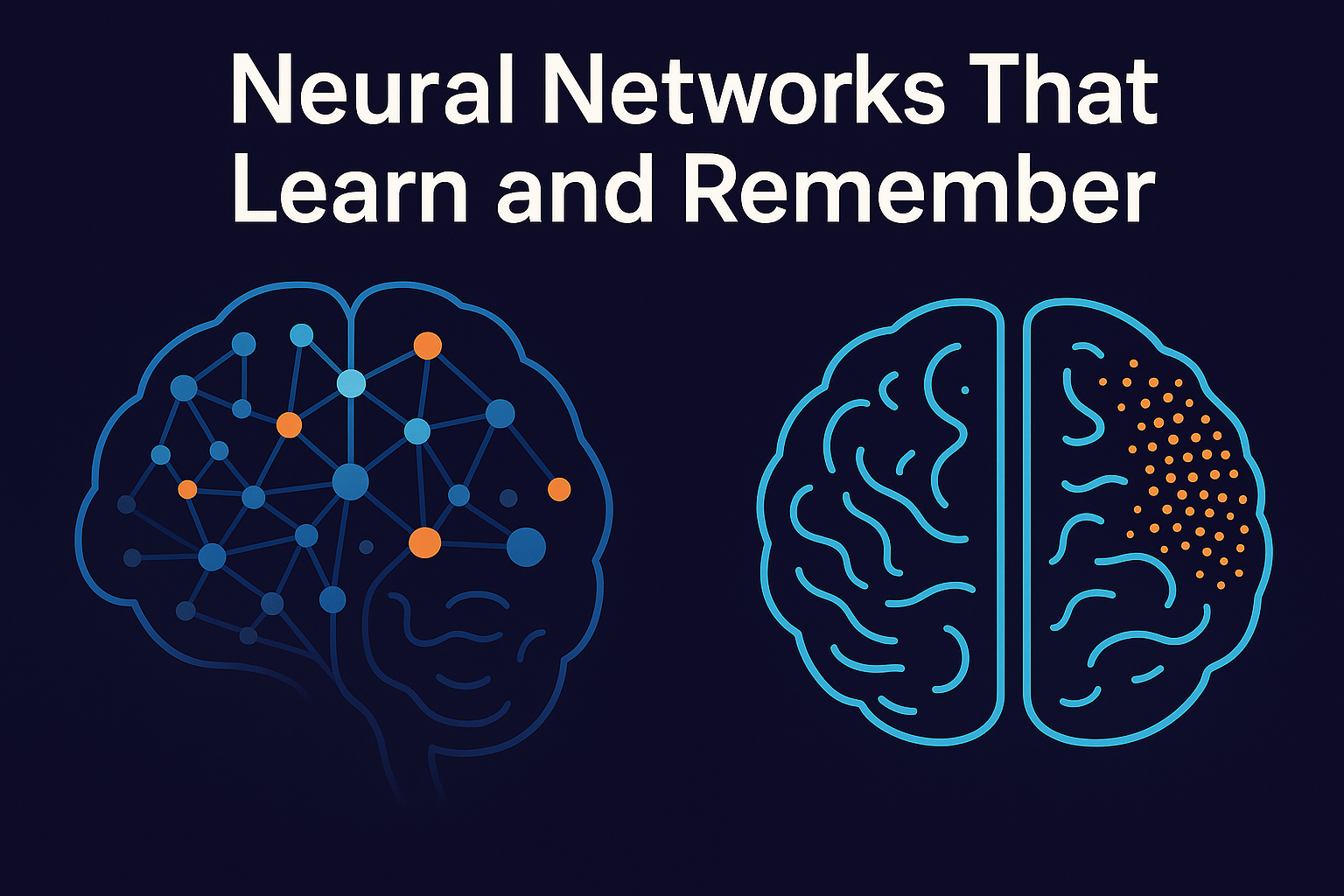Introduction
One of the most remarkable traits of human intelligence is the ability to learn continuously, accumulating knowledge and adapting to new environments without forgetting what was previously learned. Traditional artificial neural networks, however, lack this flexibility.
When trained sequentially on different tasks, these networks tend to forget earlier tasks in favor of the most recent one. This issue, known as catastrophic forgetting, limits the development of AI systems that must function in real-world, dynamic settings where continual learning is crucial.
In this article, we explore how Lifelong Learning (also called Continual Learning) and advanced methods like Elastic Weight Consolidation (EWC) are revolutionizing neural networks to retain old knowledge while learning new tasks—just like a human brain.
What is Catastrophic Forgetting?
Imagine you’re teaching a neural network to play chess (Task A). After it performs well, you train it to play Go (Task B). Surprisingly, when asked to play chess again, it performs poorly. Why? Because the neural network overwrites the parameters it learned from the chess task with those for Go.
This inability to retain previous knowledge while learning new tasks is catastrophic forgetting.
This problem arises because:
-
Neural networks update the same set of weights for every new task.
-
There’s no mechanism to preserve or prioritize earlier knowledge.
-
The system has no memory or awareness of the importance of older tasks.
The Need for Lifelong (Continual) Learning
Lifelong learning refers to an AI system’s ability to:
-
Learn from a continuous stream of tasks or data
-
Retain past knowledge without access to old training data
-
Generalize knowledge across multiple domains
This concept is essential in real-world applications like:
-
Autonomous vehicles, where the AI must adapt to changing environments
-
Robotics, where new tasks must be learned without forgetting earlier training
-
Healthcare AI, which may need to update its understanding of new diseases or treatments while retaining prior medical knowledge
Elastic Weight Consolidation (EWC): A Breakthrough Solution
Developed by researchers at DeepMind, Elastic Weight Consolidation (EWC) was one of the first successful approaches to tackle catastrophic forgetting. It is a regularization-based method that introduces a penalty in the loss function to preserve important weights from previous tasks.
How EWC Works
-
Training on Task A:
The model learns Task A using standard optimization. After training, it evaluates how important each weight is to the performance of Task A. -
Estimating Importance with Fisher Information:
The Fisher Information Matrix is used to estimate which parameters are crucial for Task A. -
Learning Task B with Constraints:
While training on Task B, EWC penalizes large changes to those important parameters. This constraint ensures that performance on Task A is not lost.
Mathematical Overview
EWC modifies the loss function for Task B:
LEWC(θ)=LB(θ)+∑iλ2Fi(θi−θi∗)2\mathcal{L}_{\text{EWC}}(\theta) = \mathcal{L}_B(\theta) + \sum_i \frac{\lambda}{2} F_i (\theta_i – \theta^*_i)^2LEWC(θ)=LB(θ)+i∑2λFi(θi−θi∗)2
Where:
-
LB\mathcal{L}_BLB is the loss on Task B
-
θ∗\theta^*θ∗ are the parameters learned from Task A
-
FiF_iFi is the Fisher Information for parameter iii
-
λ\lambdaλ is a hyperparameter controlling the strength of regularization
In simple terms: don’t mess too much with the important stuff from Task A while learning Task B.
Other Continual Learning Techniques
While EWC is foundational, researchers have developed other techniques to address different aspects of continual learning:
1. Replay-Based Methods
a. Experience Replay
-
Stores a buffer of past training data
-
Periodically retrains on old samples while learning new ones
b. Generative Replay
-
Instead of storing actual data, trains a generative model (like a GAN) to recreate past samples on demand
-
More memory-efficient and privacy-friendly
2. Dynamic Architecture Methods
a. Progressive Neural Networks
-
For each new task, add a new network column (sub-network) while freezing the old ones
-
Use lateral connections to transfer useful features from old tasks
b. Dynamically Expandable Networks (DEN)
-
Expand the network only when necessary
-
Use selective retraining and neuron splitting for scalability
3. Parameter Isolation Methods
a. PackNet
-
After each task, prune unimportant weights and reassign them to new tasks
-
Prevents interference by isolating parts of the network
b. PathNet
-
Uses evolutionary algorithms to select optimal pathways through a large network
-
Tasks use different paths to avoid conflict
Biological Inspiration
These ideas are not entirely new. The human brain shows remarkable resistance to forgetting through mechanisms such as:
-
Synaptic consolidation: Strengthening important neural connections
-
Hippocampal replay: Replaying previous experiences to reinforce memory
-
Selective attention: Allocating focus and memory resources based on importance
By mimicking these biological processes, AI researchers hope to design systems that learn as robustly as humans.
Future Applications of Lifelong Learning
Lifelong learning opens new doors in AI:
| Domain | Benefit |
|---|---|
| Self-Driving Cars | Learn from new road conditions, laws, or terrains without forgetting prior driving experience |
| Healthcare | Update disease diagnosis models as new symptoms and variants emerge |
| Personal Assistants | Adapt to user preferences while retaining past conversations and context |
| Education Technology | Provide tailored learning paths based on evolving student performance |
Summary: Comparing Continual Learning Approaches
| Approach | Key Idea | Pros | Cons |
|---|---|---|---|
| EWC | Protect important weights | Simple, effective | Needs task boundaries |
| Replay | Use old data | High accuracy | Memory/privacy constraints |
| Dynamic Architectures | Add neurons/networks | Avoids forgetting | Less scalable |
| Isolation Methods | Task-specific parameters | Good control | Can become inefficient |
Final Thoughts
Catastrophic forgetting is a critical limitation of standard neural networks, but continual learning techniques like Elastic Weight Consolidation are paving the way for smarter, more adaptive AI systems.
As we move closer to AI that can learn from experience, adapt without retraining, and retain what matters, the dream of truly lifelong learning AI is rapidly becoming reality.

